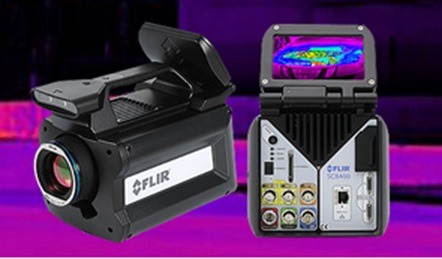
FLIR Systems X6000sc and X8000sc series thermal imaging cameras with lock-in, transient, and pulse capabilities are suitable for advanced inspections such as Non-Destructive Testing (NDT) or stress mapping that resolve temperature differences.
NDT is a standard method used to evaluate the properties of a material, component or system without causing damage.
Thermal imaging cameras offer the ability to detect internal defects through target excitation and the observation of thermal differences on a target's surface.
In addition, thermal imaging cameras provide a valuable tool for detecting defects and points of failure in composites, solar cells, bridges, and electronics as well as enabling thermal mapping of stress when performing materials testing.
The FLIR X8000sc/X6000sc Series thermal imaging cameras are suitable for scientists, engineers and researchers.
They are desigend to provide high resolution thermal images up to 1280 x 1024 pixels (FLIR X8400sc) that will enable users to see the smallest of details and assure excellent measurement accuracy.
These cameras detect temperatures differences smaller than 25mK (18mK typically).
With FLIR Systems' proprietary 'lock-in' process, temperature differences as small as 1mK will become visible. The cameras automatically adjust their temperature range to best fit the thermal scene.
With the ability to measure temperatures up to 3,000º C with an accuracy of +/- 1ºC or +/- 1%, or faint thermal emissions from areas as small as 3 x3 microns, the cameras work seamlessly with FLIR ResearchIR Max software.
This enables intuitive viewing, recording and advanced processing of the thermal data provided by the camera, FLIR says. Each camera comes standard with the software, which was specifically developed for R&D applications.





